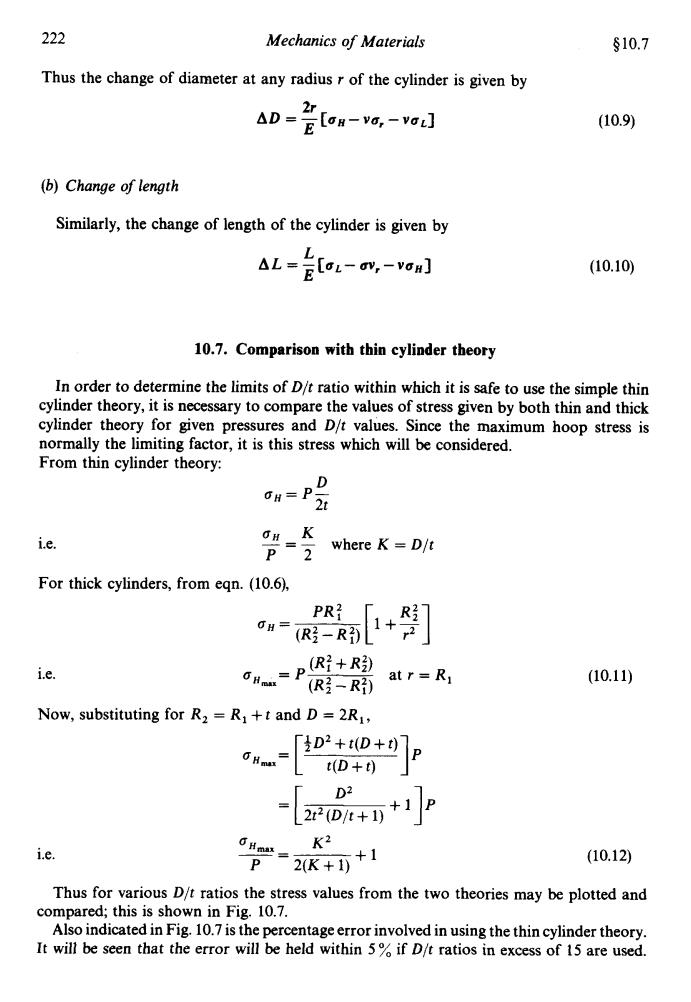正在加载图片...

222 Mechanics of Materials §10.7 Thus the change of diameter at any radius r of the cylinder is given by aD=Eaa-vG,-vo】 2r (10.9) (b)Change of length Similarly,the change of length of the cylinder is given by △L= ELoL-av,-vou] (10.10) 10.7.Comparison with thin cylinder theory In order to determine the limits of D/t ratio within which it is safe to use the simple thin cylinder theory,it is necessary to compare the values of stress given by both thin and thick cylinder theory for given pressures and D/t values.Since the maximum hoop stress is normally the limiting factor,it is this stress which will be considered. From thin cylinder theory: D OH=P 2t i.e. OH K P=2 where K D/t For thick cylinders,from eqn.(10.6), PR? R 0H=(R经-R) 1+ i.e. -P at r=R (10.11) Now,substituting for R2 =R+t and D 2R1, T生D2+D+0]P t(D+t) D2 -22+D+1P i.e. 2水++ K2 (10.12) Thus for various D/t ratios the stress values from the two theories may be plotted and compared;this is shown in Fig.10.7. Also indicated in Fig.10.7 is the percentage error involved in using the thin cylinder theory. It will be seen that the error will be held within 5%if D/t ratios in excess of 15 are used.222 Mechanics of Materials Thus the change of diameter at any radius r of the cylinder is given by 2r E AD = -[uH- VU, - VUL] (b) Change of length Similarly, the change of length of the cylinder is given by L E AL = -[uL-uv,-vuH] 0 10.7 (10.9) (10.10) 10.7. Comparison with thin cylinder theory In order to determine the limits of D/t ratio within which it is safe to use the simple thin cylinder theory, it is necessary to compare the values of stress given by both thin and thick cylinder theory for given pressures and D/t values. Since the maximum hoop stress is normally the limiting factor, it is this stress which will be considered. From thin cylinder theory: i.e. where K = D/t _- OHP2 For thick cylinders, from eqn. (10.6), 1.e. Now, substituting for R, = R, + t and D = 2R,, aHmx t(D + t) D2 + 11, = [ 2t2 (D/t + 1) i.e. K2 -- P 2(K+l)+l (10.1 1) (10.12) Thus for various D/t ratios the stress values from the two theories may be plotted and compared; this is shown in Fig. 10.7. Also indicated in Fig. 10.7 is the percentage error involved in using the thin cylinder theory. It will be seen that the error will be held within 5 % if D/t ratios in excess of 15 are used